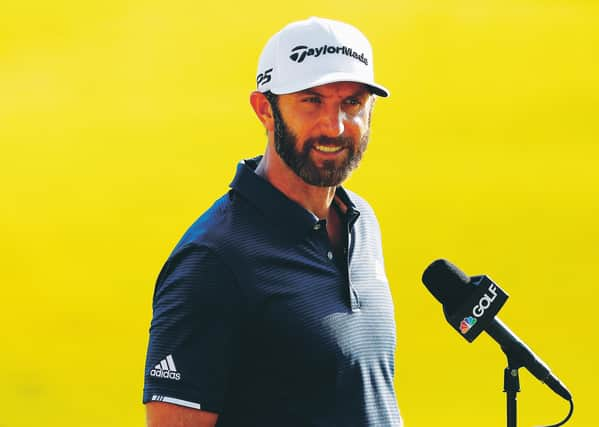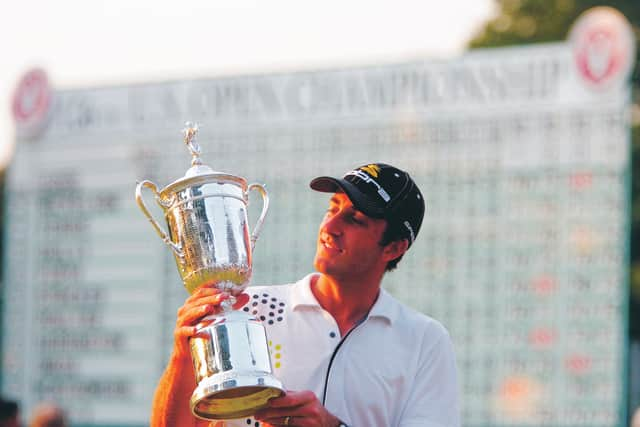US Open is back at Winged Foot - so don’t expect low scoring


Dustin Johnson capped off a torrid stretch of golf at just the right time. He had at least a share of the 54-hole lead in four straight tournaments, turned two of them into victories, returned to No. 1 in the world and ended the PGA Tour season by winning the FedEx Cup.
It was worthy of a big celebration and time to relax, except there was no time for that.
The US Open was right around the corner.
Advertisement
Hide AdAdvertisement
Hide Ad

“Get back to grinding,” said Johnson, who was expected at Winged Foot six days later to start preparing for what figures to be the toughest test of the year.
The US Open is all about location, and the history of Winged Foot says plenty.
Of the 750 players in the five previous US Opens at Winged Foot, only two of them completed 72 holes under par. That was in 1984, when Fuzzy Zoeller and Greg Norman each finished at four-under 276 – Curtis Strange was five shots behind – and Zoeller beat him in an 18-hole playoff the next day.
The 1974 US Open became known as the “Massacre at Winged Foot” when Hale Irwin won at seven-over par. Geoff Ogilvy won the most recent US Open on the A.W. Tillinghast design at five-over par, and most remarkable is that hardly anyone complained.
This year, however, location has just as much to do with the calendar.
Evidence of a year gone amok from the Covid-19 pandemic is a US Open moving to September. Golf was shut down on 13 March and didn’t resume until one week before the US Open was supposed to be played. Instead, the USGA found a suitable date on 17-20 September in Mamaroneck, New York, about five miles from one of the early hot spots of the coronavirus.
There will be no spectators. Golf is used to that by now, though it will be no less eerie. There are US Open fans and US Open fans in New York. There will be no hospitality tents to spare a wild Phil Mickelson tee shot on the 72nd hole.
And for players, there is no letting up. The likes of Johnson, Jon Rahm and Justin Thomas – the top three in the world going into the 120th US Open – will be playing for the sixth time in eight weeks, all big events, all against the strongest fields.
Advertisement
Hide AdAdvertisement
Hide Ad“This is weird for every one of us,” said Tiger Woods, who at least was allowed two weeks off from not making it to the Tour Championship.
The last time the US Open was played in September, it turned out to be one of the most significant moments in American golf. Francis Ouimet, a 20-year-old amateur, beat British greats Harry Vardon and Ted Ray in a playoff and put golf on the front of US newspapers for the first time.
What does this US Open have in store?
Mickelson has the most scar tissue of the 14 players who were at Winged Foot for the 2006 US Open.
He had a one-shot lead playing the final hole when he tried to hit 3-iron over a tree, struck the tree, caught a plugged lie in the bunker and made double bogey to lose by one. He wasn’t alone in his misfortunes. Colin Montgomerie made double bogey from the fairway and was runner-up, while Jim Furyk missed a 5-foot par putt to also finish one behind.
Mickelson stands out because of his six silver medals as runner-up, when a gold medal is what he needs to complete the career Grand Slam. Now he’s 50, still good enough that William Hill said one punter has placed $45,000 on Lefty to win at 75-1 odds, a potential payout of $3,375,000.
Johnson comes in as the betting favourite based on recent form and overwhelming talent. His only major was four years ago in the US Open at Oakmont, reputed to be among the toughest courses in America.
“Those are the courses that I like,” Johnson said, already brimming with confidence. “The harder the better. All my wins come on the hardest golf courses I’ve ever played.”
That he has only one major stands out. But for all his mishaps, Johnson is in the mix more often than most at the US Open.
Advertisement
Hide AdAdvertisement
Hide AdHe had a three-shot lead in 2010 at Pebble Beach until that disappeared in one hole and he shot 82. He was a 12-foot eagle putt away from winning at Chambers Bay in 2015 until he three-putted on the bare green and finished one shot behind Jordan Spieth. And then two years ago at Shinnecock Hills, he had a four-shot lead going into the weekend until he shot 77 on Saturday to fall into a four-way tie for the lead and Brooks Koepka wound up winning.
Koepka won’t be around to extend his amazing run – victories at Erin Hills in 2017 and Shinnecock Hills in 2018, and pushing Gary Woodland to the finish line at Pebble Beach last year before finishing second. Koepka’s left knee hasn’t been right all year, and he finally decided to take enough time off until it heals. That led to him withdrawing last week.
A US Open without Koepka isn’t nearly as bizarre as a US Open without qualifiers.
Having to move the US Open from Father’s Day to the start of the NFL season was bad enough. The greater effect of the pandemic on the US Open was having to eliminate qualifying, a staple of this major for nearly a century. The USGA is proud to say every year that roughly half the field had to go through qualifying. Because of more than 100 courses involved in two stages of qualifying, those were scrapped in favour of an all-exempt field.
It still has 13 amateurs – including Scotland’s Sandy Scott – and plenty of non-PGA Tour players, typical of any US Open. The field has been reduced from 156 to 144 because of the September date that provides about three fewer hours of daylight.
Scott will be joined in the field by two compatriots. Fife’s Connor Syme is in on the strength of his performances on the UK swing of the new European Tour season, while Oban’s Bob MacIntyre earns his spot because of his high world ranking.
Still to be determined is what kind of test the winner will have to pass. Woods and Justin Thomas took a scouting trip to Winged Foot a month ago and while it was soft that day, Woods said it was ready for a US Open. Rahm went two weeks ago and it didn’t take long to figure out what he would be facing.
“I’m not shocked that the winning score last time was 5-over par,” Rahm said. “And if it gets firm like some of the USGA guys told me they want it to be, I don’t see how any of us shoot under par – or if we shoot under par, it would be somebody winning by a lot.”
Advertisement
Hide AdAdvertisement
Hide AdAlso getting some attention were the words of Steve Radibeau, the director of golf courses at Winged Foot. According to The Journal News, he kept saying, “Plus 8, plus 8, plus 8,” indicating an ideal winning score to “cap a very difficult summer.”
Such a score would fit the reputation of Winged Foot. This is where the late Sandy Tatus of the USGA so famously said in 1974, “Our intention is not to embarrass the greatest players in the world but to identify them.”
At Winged Foot, it’s usually a little of both.
A message from the Editor:
Thank you for reading this story on our website. While I have your attention, I also have an important request to make of you.
The dramatic events of 2020 are having a major impact on many of our advertisers - and consequently the revenue we receive. We are now more reliant than ever on you taking out a digital subscription to support our journalism.
Subscribe to scotsman.com and enjoy unlimited access to Scottish news and information online and on our app. Visit https://www.scotsman.com/subscriptions now to sign up.
By supporting us, we are able to support you in providing trusted, fact-checked content for this website.
Joy Yates
Editorial Director
Comments
Want to join the conversation? Please or to comment on this article.